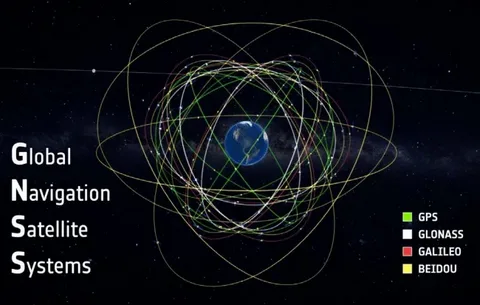Global Navigation Satellite Systems (GNSS) have revolutionized the way we navigate and position ourselves anywhere on Earth. Traditionally dominated by the United States’ GPS, the GNSS landscape has expanded to include multiple satellite constellations such as Russia’s GLONASS, Europe’s Galileo, and China’s BeiDou. This expansion has led to the rise of Multi-Constellation GNSS: Leveraging GPS, GLONASS, Galileo, and BeiDou to achieve more accurate, reliable, and robust positioning and timing solutions.
What is Multi-Constellation GNSS?
Multi-Constellation GNSS refers to the simultaneous use of signals from multiple satellite navigation systems. Instead of relying on a single system, such as GPS alone, devices and applications utilize satellites from GPS, GLONASS, Galileo, and BeiDou. This approach provides several key benefits, including improved satellite visibility, enhanced positioning accuracy, and greater system reliability, especially in challenging environments like urban canyons or dense forests.
Advantages of Leveraging GPS, GLONASS, Galileo, and BeiDou
Enhanced Accuracy and Precision
Each GNSS constellation has its own coverage, satellite geometry, and signal characteristics. By combining data from GPS, GLONASS, Galileo, and BeiDou, users benefit from a larger pool of satellites, which reduces positioning errors and improves accuracy. Multi-constellation receivers can pinpoint locations with greater precision than those relying on a single system.
Increased Availability and Reliability
Using multiple GNSS constellations increases satellite availability, which is crucial in environments where signals may be obstructed by buildings, mountains, or foliage. If one constellation’s signals are temporarily blocked or degraded, the others can compensate, ensuring continuous and reliable navigation and timing services.
Robustness Against Interference and Signal Loss
Multi-constellation GNSS receivers can better withstand signal interference and jamming. The redundancy provided by multiple satellite systems allows the receiver to cross-verify signals, increasing the overall robustness and security of positioning data.
Applications of Multi-Constellation GNSS
The benefits of Multi-Constellation GNSS: Leveraging GPS, GLONASS, Galileo, and BeiDou extend across various sectors:
- Aviation and Maritime: Critical for safe navigation where precision and reliability are paramount.
- Agriculture: Enables precision farming techniques by providing highly accurate positioning.
- Telecommunications: Supports synchronization of networks requiring precise timing.
- Autonomous Vehicles: Essential for navigation and safety systems in self-driving cars.
- Outdoor Recreation: Enhances tracking and navigation for hiking, biking, and adventure sports.
The Future of Multi-Constellation GNSS
As satellite technology continues to advance and more countries expand their GNSS capabilities, leveraging multiple constellations will become standard practice. Integration with augmentation systems and newer signals will further refine accuracy and reliability, paving the way for innovative applications like smart cities, IoT devices, and advanced robotics.
In summary, Multi-Constellation GNSS: Leveraging GPS, GLONASS, Galileo, and BeiDou is reshaping the navigation landscape by offering unparalleled accuracy, availability, and reliability. By tapping into the strengths of multiple satellite systems, users and industries worldwide gain more confidence in their positioning and timing solutions, unlocking new possibilities in technology and everyday life.


